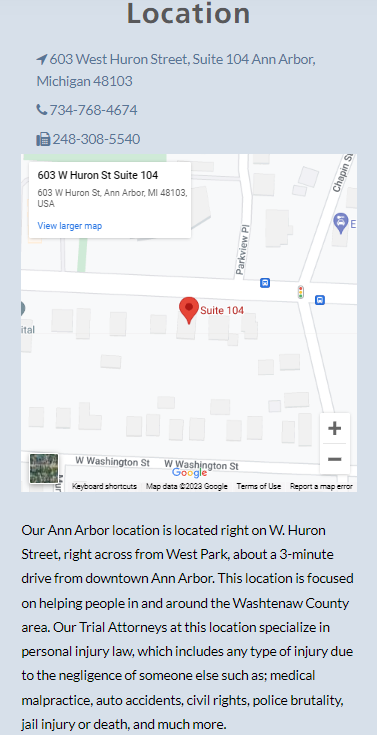How to Create Local Landing Pages That Convert
Let’s start with a quick summary—local pages must have useful, valuable information for your audience. You can’t have multiple location pages with the same content. Essentially, if the information on your pages isn’t useful, you’ve wasted your time and budget.
But what do we mean by ‘useful’ and ‘valuable’ content? And how can this type of content help users and, by extension, your business?
Let’s take a closer look at how you can create valuable local landing pages that rank and convert.
Step 1. Know Which Locations Need Pages
Like most things with search engine optimization (SEO), a little research now will help us make better decisions as we continue building our local pages and website.
Ask yourself questions like:
- What are people searching for in relation to your services and location(s)?
- If your business has multiple locations, are services standardized across them?
Once you have a list of keywords and related questions (check the People Also Ask and Related Searches sections on Google for more ideas!), check the search volume; if your business is seasonal, remember to also check Google Trends to establish topic interest. Compare your business goals to the search volumes and trends to create a locations priority list.
For example, if you’re a disaster restoration company based out of Ann Arbor, MI, and notice that there are higher search volumes for water damage restoration versus fire damage restoration in Ann Arbor, you’ll want to prioritize making a water damage restoration page targeting Ann Arbor.
Essentially—if many people in your area are consistently searching for a specific service, you’ll want to make a location page for that service.
If you are new to understanding local keyword research, start with a course like this from Clair Carlile. When you are ready to start, Darren Shaw shares great (and free) local keyword research tools!
Step 2: Ensure Your Page Has These Essential Elements
The essential information your page needs to have for potential or returning customers includes:

- Name: Your brand’s name and logo (yes, both!)
- Address: How the address is displayed will be used to check your Google Business Profile and citation accuracy. Make sure it is consistent!
- Phone: Phone and contact information like email addresses. Ensure users can click to call or email with links.
- Map: Google Maps of your location or the specific location’s service area.
- Directions: Provide potential clients with easy instructions on how to find your location. It can be as simple as Near the corner of Brownell St. and Auburn R. to find us!
- Local Image: Have at least one exterior image of your location or a unique local image if you are a service area business. For example, if you are a service area business, you can upload an image of your team at a local landmark, etc.
- Services: Let customers know what products and services are available from the location. Link to those service pages if you have them.
Step 3: Expand Localized Content When Needed
Take your existing local pages to the next level with additional information your customers may need.
- Call-to-Action (CTA): Does your location page include a CTA? Is it the right CTA? Use an A/B testing tool to experiment with different CTAs and find one that performs well.
- Conversion Form: Do your customers prefer to text or email? Have a contact form on the page to allow users to convert without clicking off the page or going elsewhere.
- Staff Photos: Build trust with your customers by letting them see the people they will work with.
- Chat: This is dependent on your website’s existing functionality and available staffing resources to read and respond to customer questions.
- User-Generated Content: Location-specific reviews or testimonials. Whenever possible, include a link to the review or proof it is from a real customer.
- Local Connections: Share the charities, Chamber of Commerce, and related businesses you’re connected or partnered with.
- Location-Specific Content: Provide information on the services in relation to the location or services in the area. For example, what makes laying brick pavers different in Michigan than in Texas?
- Competitive Difference: Highlight what sets you apart from your competitors.
- Schema: Schema allows Google and other search engines to understand your content better, improving the likelihood of ranking for relevant searches.
- Pricing: If you don’t have set pricing for your products and/or services, can you provide a pricing scale? Even providing ‘Pricing starts at [insert number]’ can be useful for potential customers.
Get Help Crafting Better Local Landing Pages
Local content needs to answer the where, what, and why: Where is the business located? What services/products are offered at this location? Why should you trust this business?
If you need help setting up or optimizing local landing pages, schedule a consultation with one of our experts at Momentum today!
